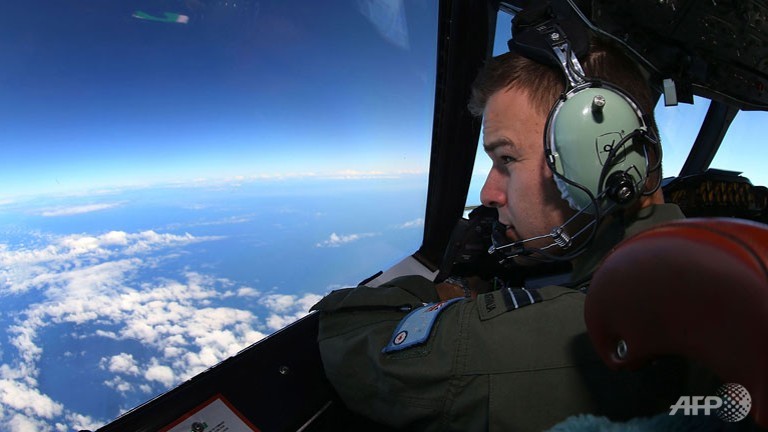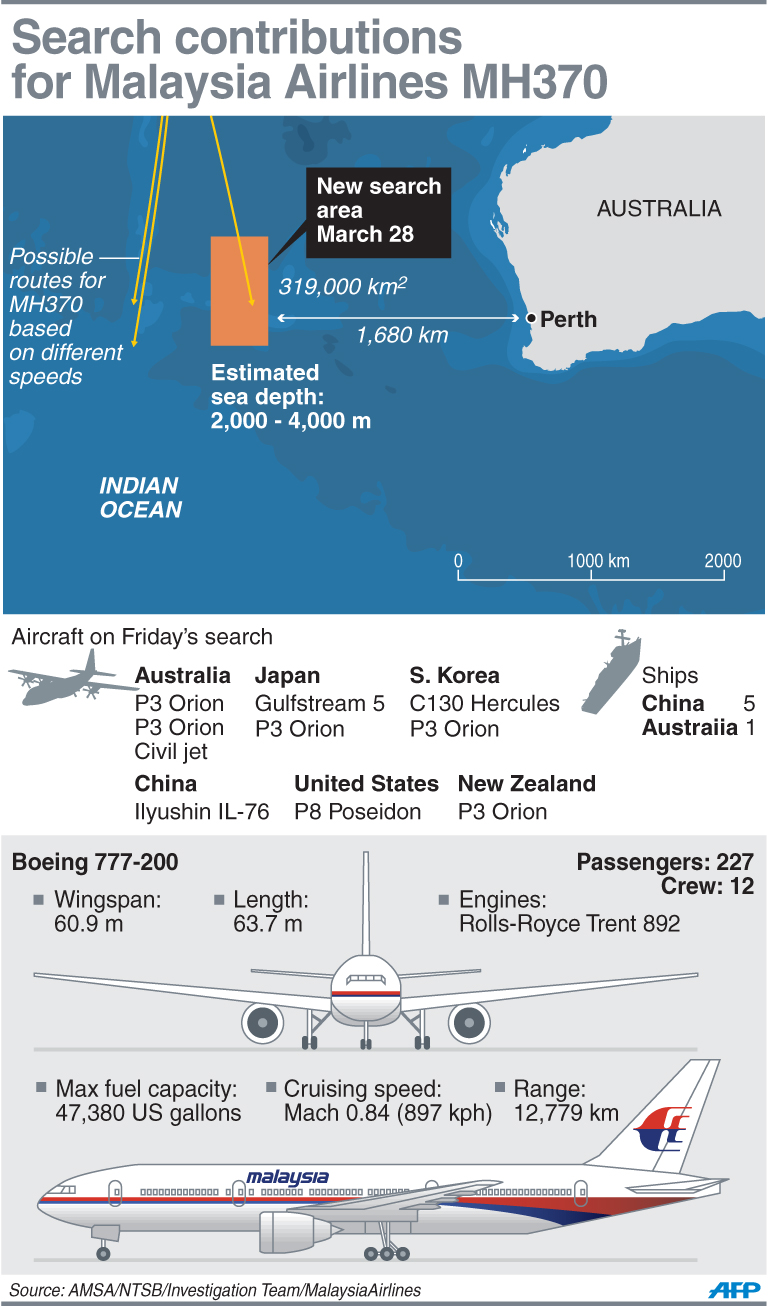Possible debris spotted as MH370 search moves to new area

A RAAF pilot looks out from the cockpit of a AP-3C Orion during a search mission for missing Malaysia Airline flight MH370 in the southern Indian Ocean. (AFP/POOL/Paul Kane)
CANBERRA: Aircraft crew reported first sightings of objects floating in the southern Indian Ocean after Australian authorities moved the search for Malaysia Airlines flight MH370 to a new area Friday.
The shift was the result of a “new, credible lead” that Australian Prime Minister Tony Abbott vowed would be thoroughly investigated.
The new search area, at 319,000 square km, is about four times bigger than the previous search area in the southern Indian Ocean and 1,100 km to the northeast, according to the Australian Maritime Safety Bureau (AMSA).
It is also just 1,850 km due west of Perth, meaning it was in more moderate seas and closer to the search base so aircraft could spend more time over the area, AMSA and Australian Transport Safety Bureau (ATSB) officials said at a joint press conference in Canberra.
The crew of a New Zealand air force P3 Orion reported seeing objects floating in the water late Friday, although they cannot be confirmed by ship until Saturday, according to the AMSA Twitter feed.
Earlier Friday, AMSA emergency response general manager John Young said that an international investigation team in Malaysia had provided updated advice that had refined the presumed flight path and determined the new area.
"This is our best estimate of the area in which the aircraft has likely crashed into the ocean," said Young.
The key pieces of information related to early positional information from the aircraft's "pinging" and later tracking by a satellite of the aircraft system, said ATSB chief commissioner Martin Dolan.
This analysis was combined with data from Boeing about the likely performance, such as speed and fuel consumption of the Boeing 777 aircraft.
"The new information is based on continuing analysis of radar data between the South China Sea and the Strait of Malacca before radar contact was lost," said Dolan.
"It indicated the plane was travelling faster than previously estimated, resulting in increased fuel usage and reducing the possible distance it travelled south into the Indian Ocean."
Young said the new search area had two benefits, with the first being its closer proximity to Perth.
"We will certainly get better time on the scene. We started nearly 3,000 km from Perth. The other benefit we get from being further north is the search area has moved out of the Roaring Forties, which creates very adverse weather.
"I'm not sure that we'll get perfect weather out there, but it's likely to be better more often than we've seen in the past and we will see what that does it terms of satellite imagery when the re-tasking of satellites starts to produce new material as well," he said.
Prime Minister Tony Abbott said in a statement to parliament that his government would continue to work closely with the Malaysian and Chinese governments on the search, which had been "a truly remarkable international effort."
"This is an extraordinarily difficult search, and an agonising wait for family and friends of the passengers and crew," said Abbott.

What the stars mean:
★ Poor ★ ★ Promising ★★★ Good ★★★★ Very good ★★★★★ Exceptional
Latest News
More News
- 72 nations sign landmark Hanoi cybercrime convention (October 26, 2025 | 18:00)
- UN Secretary-General commends Vietnam’s global leadership (October 26, 2025 | 09:00)
- APEC finance ministers convene to tackle regional challenges (October 22, 2025 | 17:31)
- Rewiring global trade: ASEAN’s rise as supply chain hub (October 17, 2025 | 11:40)
- Vietnam attends first World Nuclear Week Forum in Russia (September 26, 2025 | 10:50)
- Vietnam attends 69th session of IAEA General Conference (September 16, 2025 | 10:00)
- ADB, WB pledge over 12 billion USD for ASEAN power grid, renewable energy projects (August 15, 2025 | 14:18)
- Lowy Institute proposes AI-based tobacco control solutions for ASEAN (August 15, 2025 | 14:14)
- Cloud computing policy to position Malaysia as regional hub by 2030 (August 15, 2025 | 14:11)
- Thailand, Cambodia suffer numerous cyber attacks (August 05, 2025 | 16:19)


















 Mobile Version
Mobile Version